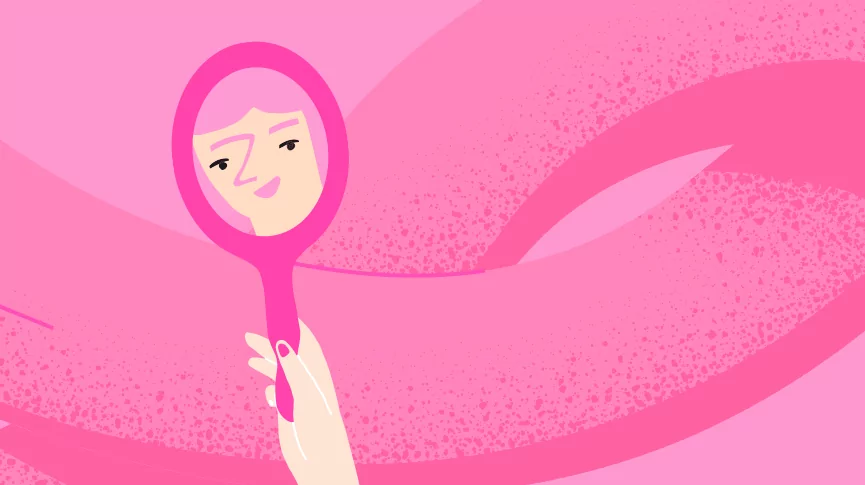History of Hysteria: Women’s Health Treatments Over Time

The word “hysteria” comes from the Greek word “hystera,” which means uterus. Since Ancient Egypt and Greece, a host of female ailments have been blamed on being female.
In fact, up until 1980, hysteria was a formal medical diagnosis that was defined as a mental disorder in the American Psychiatric Association’s Diagnostic and Statistical Manual of Mental Disorders.
Let’s take a look at the history of hysteria and how gender has impacted the way doctors throughout the ages have approached women’s health.
Ancient Greeks & Egyptians: Wandering Wombs
The earliest known documentation of hysteria is in a kahun papyrus dating back to around 1900 BC, where female ailments were attributed to a displaced or starved uterus.
These dysfunctional uteri were believed by the ancient Egyptians and Greeks to be the source of a range of health problems. The ancient Greeks believed that a uterus had the ability to float throughout the female body, placing pressure on other organs and causing negative symptoms.
Works by the physician Aeataeus and philosopher Plato called this phenomenon ‘hysterical suffocation,’ and treated the condition by trying to coax the uterus back into its original spot by inducing sneezing through placing bad smells near the mouth and good smells near the vagina.
Almost any symptoms, from distemper to fevers, were attributed to female sex organs; the ancient Greek physician Galen proposed that the retention of ‘female seed’ within the uterus was the root of insomnia, depression, anxiety, fainting, and irritability.
Mass Hysteria in The Middle Ages
In the Middle Ages, symptoms of hysteria were often conflated with witchcraft. When witchcraft became a statutory crime punishable by death in 1541, outbreaks of mass hysteria were documented.
These waves of “mass hysteria” referred to random outbursts of motor abnormalities in groups. Groups of people, from half a dozen to hundreds, would burst out in tarantism, St. Vitus’ dance, and convulse until they dropped from exhaustion.
During this period, the retention of menstrual blood was attributed to female issues, which required purging of the offensive fluid, making marriage (and sanctified sexual intercourse) the solution. Since male semen was believed to have healing properties, sex served the dual purpose of “healing” as well as procreation.
According to a 1637 text, women with high sex drives ‘inclined to venery’ had an unhealthy buildup of these fluids. Thus, midwives would occasionally manually stimulate women who were unable to orgasm via heterosexual sex (unmarried women, nuns, widows, women who couldn’t orgasm from penetrative heterosexual sex) in order to release the fluids.
1600s to 1900s: Shifting From the Womb to the Brain
Gradually, physicians began shifting their attention from the womb to the brain as the source of hysteria, although there were still theories about the uterus influencing the brain through various processes involving nerves or blood vessels.
People in the 17th century also began to realize that males could suffer from hysteria, and it began to be associated with mental distress such as melancholy and hypochondria, which is where the modern terms originate from.
As physicians began to study the mind and its influence on the body in the 18th and 19th centuries, hysteria began to be classified as a nervous system disorder.
Modern Hysteria: The Legacy of Freud
The first physician to study hysteria in a modern scientific context was French doctor Jean-Martin Charcot. In the late 1880s, he lectured to medical students on hysteria symptoms he thought were the result of internal injury that was interfering with nervous system function.
Sigmund Freud, the father of psychoanalysis, happened to be one of his students. Along with his partner Breuer, Freud further developed Charcot’s theories, formulating the belief that hysteria was not the result of a physical injury but of psychological trauma or repression.
He tied all of this to his famous “penis envy” theory, where a young female first realizes she has been symbolically castrated because she has no penis. Freud believed that female psychological damage was a direct result of not having male sexuality, and described hysteria as ‘characteristically feminine’, which supported marriage and heterosexual sex as treatments.
Treatment for Hysteria Leads to Invention of Vibrators
As seen throughout history, orgasm seems to be a common tool used to treat female hysteria.
In cases where marriage wasn’t a possible cure, or where the female complained of not being able to reach orgasm through penetrative sex with her husband, uterine massage was used as a treatment method through the 20th century.
In fact, a Swedish Army Major named Thure Brandte opened several highly successful clinics specializing in uterine massage. His team of 5 med students, 10 female physical therapists, and various interning doctors treated up to 117 patients a day by manually stimulating the patient to orgasm.
Since these sessions were so ‘long and physically exhausting’ for doctors, they created stimulation devices, a.k.a vibrators.

Clara Wang is a freelance writer based in Nashville, TN but often found abroad. She mostly muses about the three best things in life: Food, sex, and music. Her work has been featured in publications such as Eater Austin, Eater Nashville, Giddy, Buzzfeed, Refinery29, the Austin Chronicle, the Austin American Statesman, and the Daily Dot.


